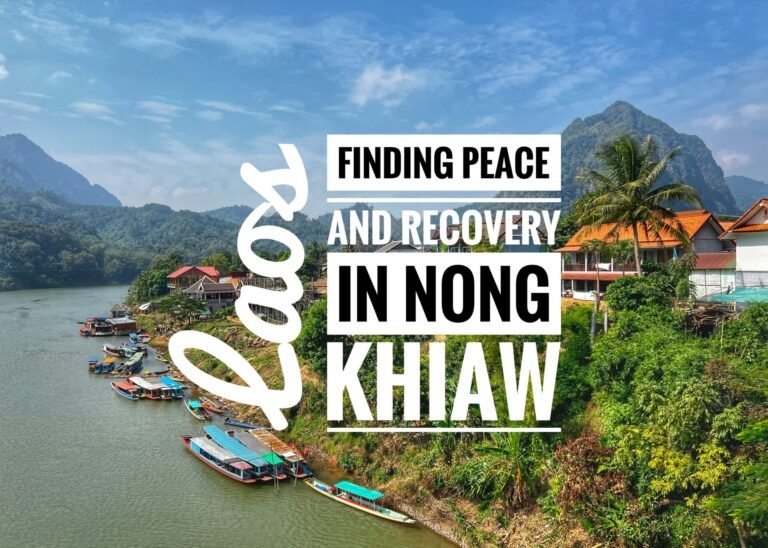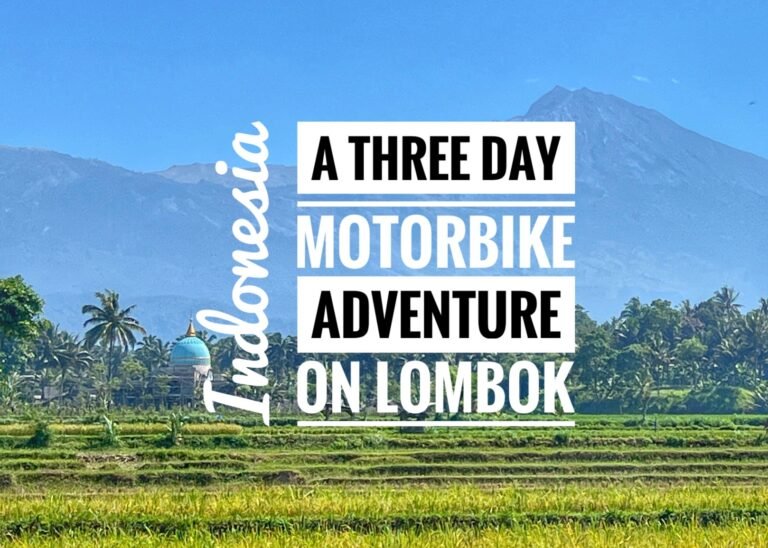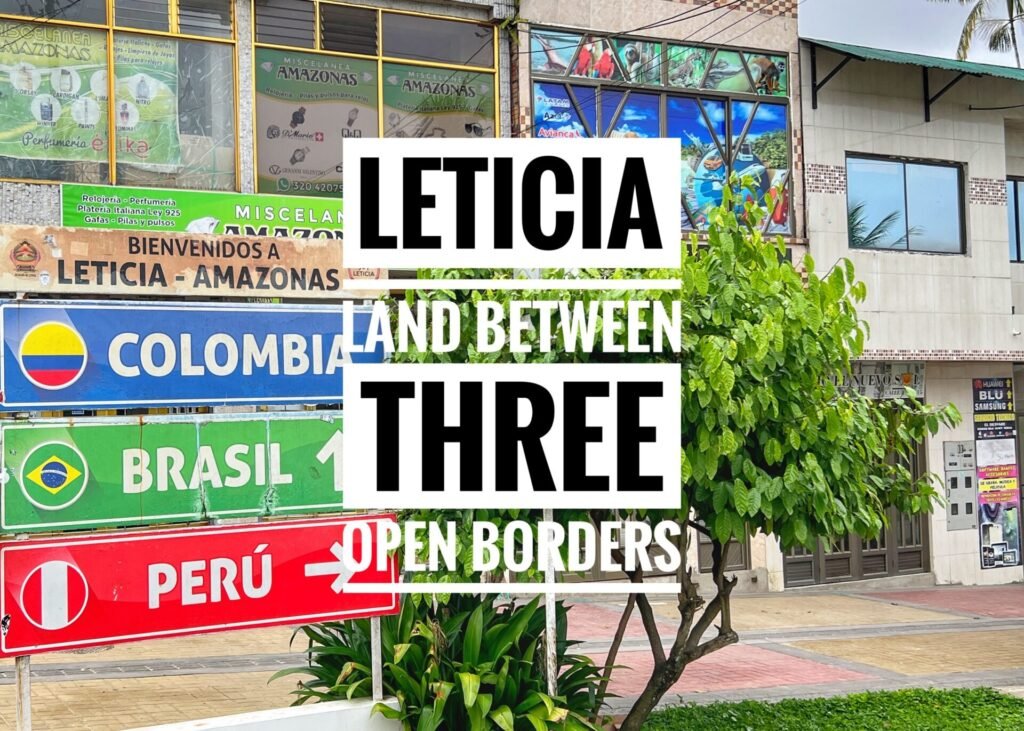
More than 40% of South America is the Amazon Basin. It stretches across 9 of the 13 South American countries and is commonly known as Planet Earth’s Lungs, serving as the world’s most powerful oxygen generator, which is also critically endangered. Thus, we knew it was time for us to get there.
We chose our entry point to be Leticia, Colombia which sits on a small very-much-battled-over wedge in the southeast of the country, along with the borders of Brazil and Peru. From here, you can experience the jungle in all types of all levels and budgets, and also head down the mighty river itself to your next destination.
Leticia itself if a very functional, but slightly gritty place, which serves as the base for almost all excursions in the area, as well as having a national airport, with flights from Bogota. We spent two nights there, at various transitory points.
This is one (?) of the only places in the world where three country borders come together, which can be traversed openly. (Aka, no passports required.) Today, the police and military presence is copious. In the 1970s and 80s it was synonymous with cocaine and exotic animal trafficking, but fortunately that has been cleaned up and now it’s predominantly known for eco-tourism.
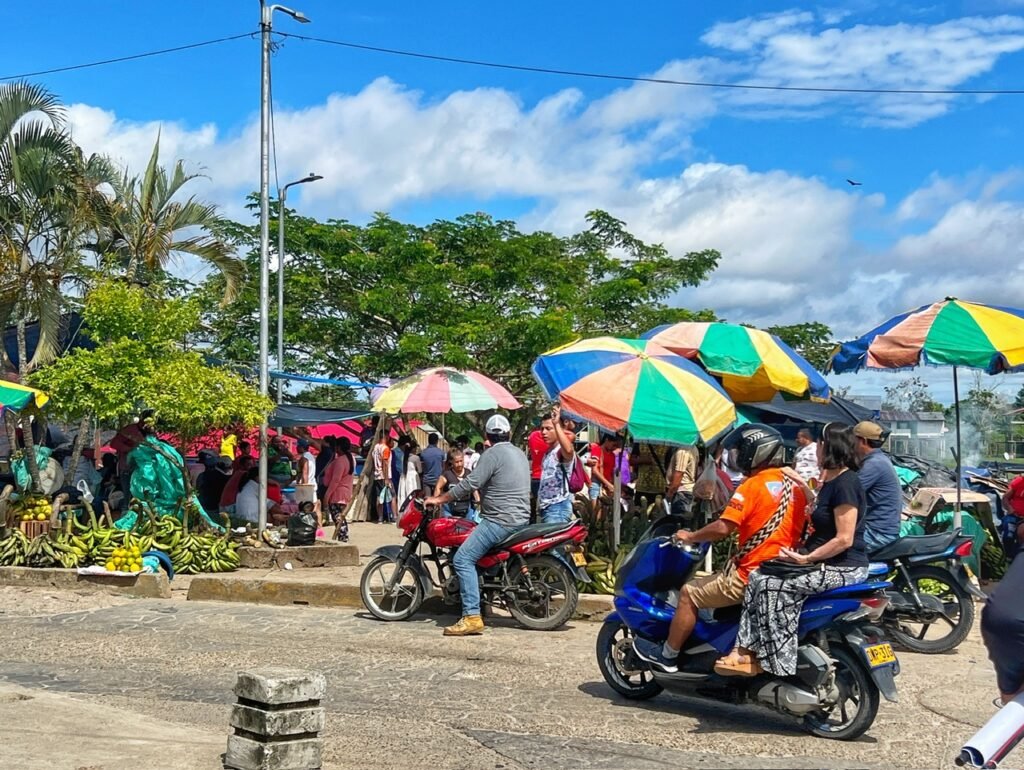
The city itself exhibits shades of India (sin cows except on your plate.) It has about 40,000 residents, seemingly close to its number of zippy motorbikes and chugging tuki-tukis. (Yes, this is the endearing Spanish name for a tuk tuk.)
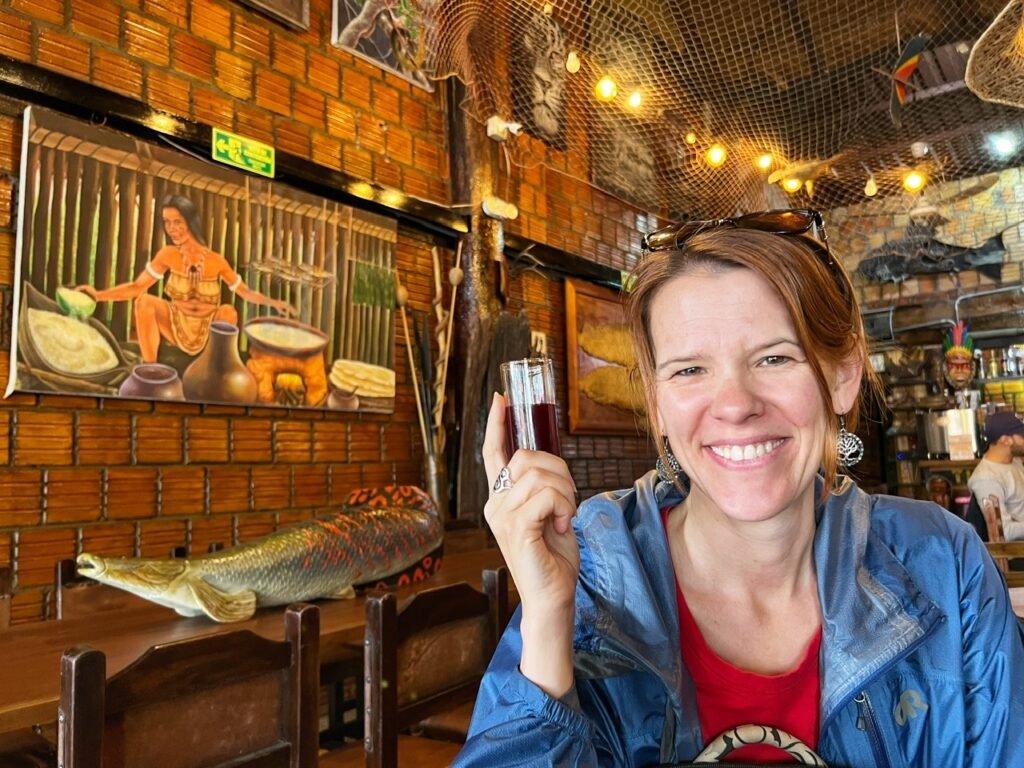
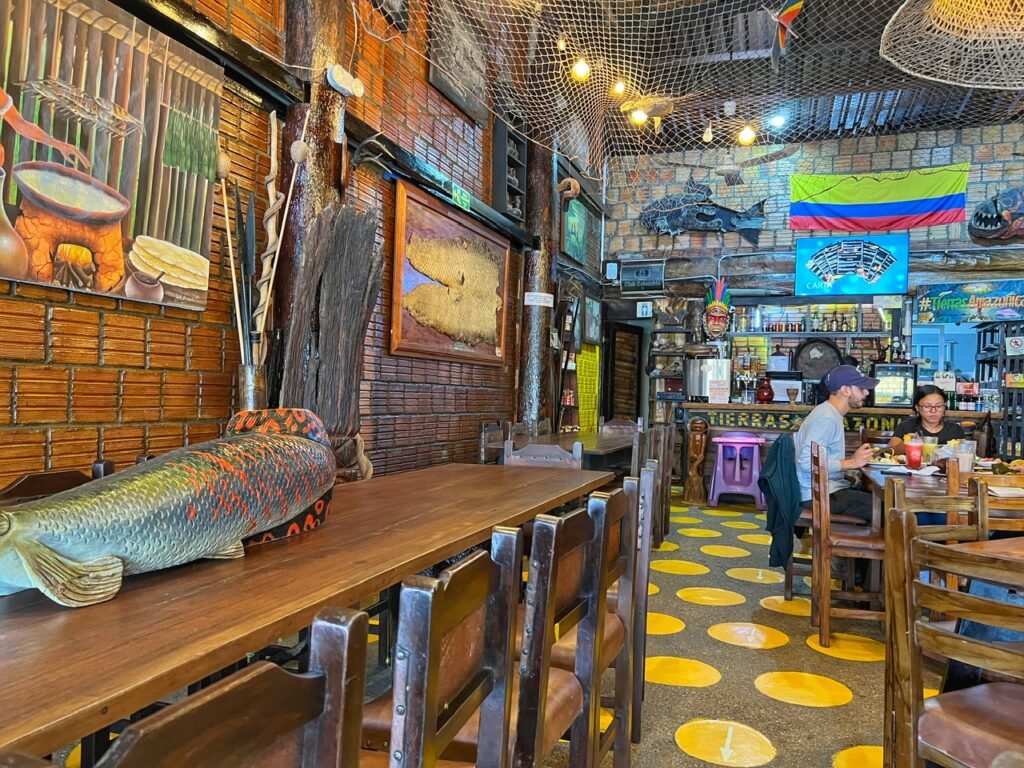
When we first landed in Leticia, our host naturally dropped us at Tierras Amazónicas so we could grab some lunch at…a touristy restaurant. We were presented with a welcome drink, called chicha morada, which tasted a lot like Christmas. It was an atmospheric restaurant, but of course a bit expensive for our taste.
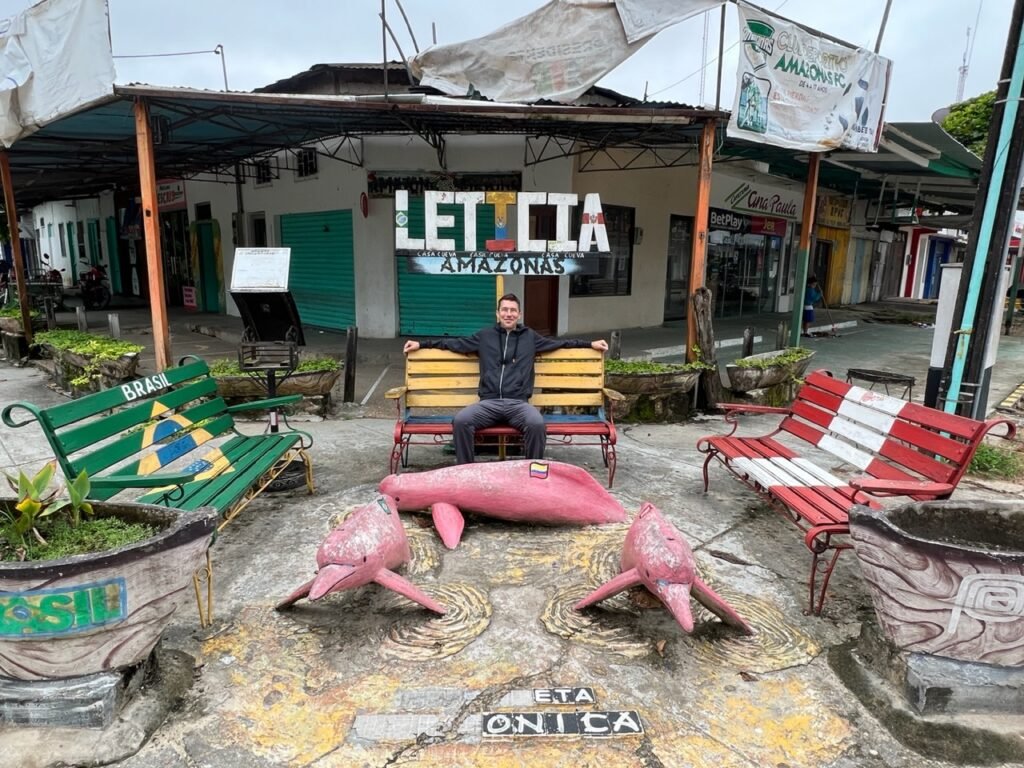
Greg choosing his favorite country to pop a squat on…

…while Mandy chooses all three.

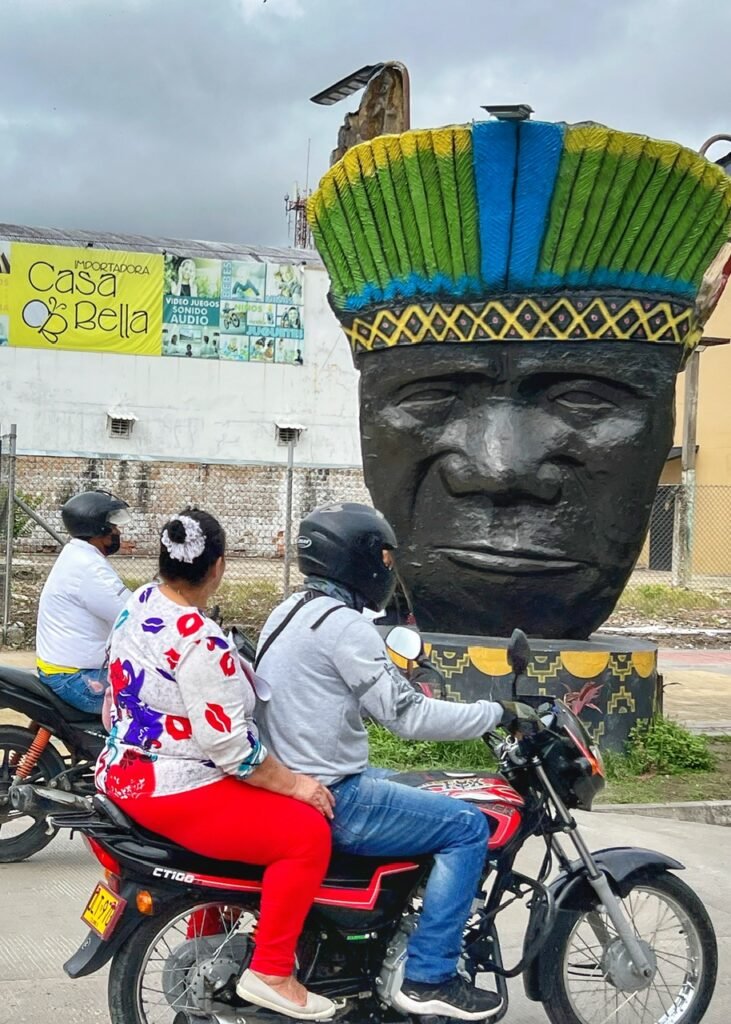
The streets of Leticia, where they do things big in the Amazon. They seem to have a Texan mentality in some senses.
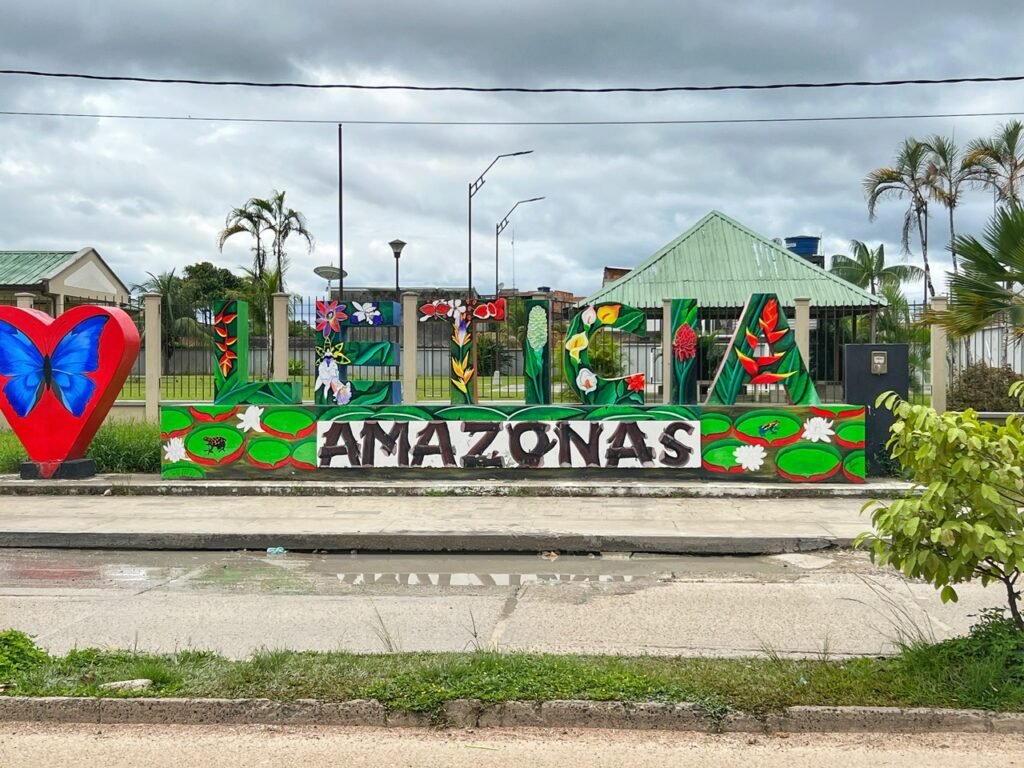
The fluffy and cheery official Leticia sign.


On more than one occasion, we had business to do in Brazil. One of these times was to get our official entry stamp, and the other was just trying to uncover mystery logistics regarding our next departure. We chose to walk from Leticia into Brazil to do this. It was very bizarre to stroll under a useless-looking metal structure and across a country border without customs, a passport or even a welcome sign.
In fact, the only reason you knew you were in a new world is the sheer number of money changers and that our now familiar Spanish metamorphosed into awkward Portuguese.
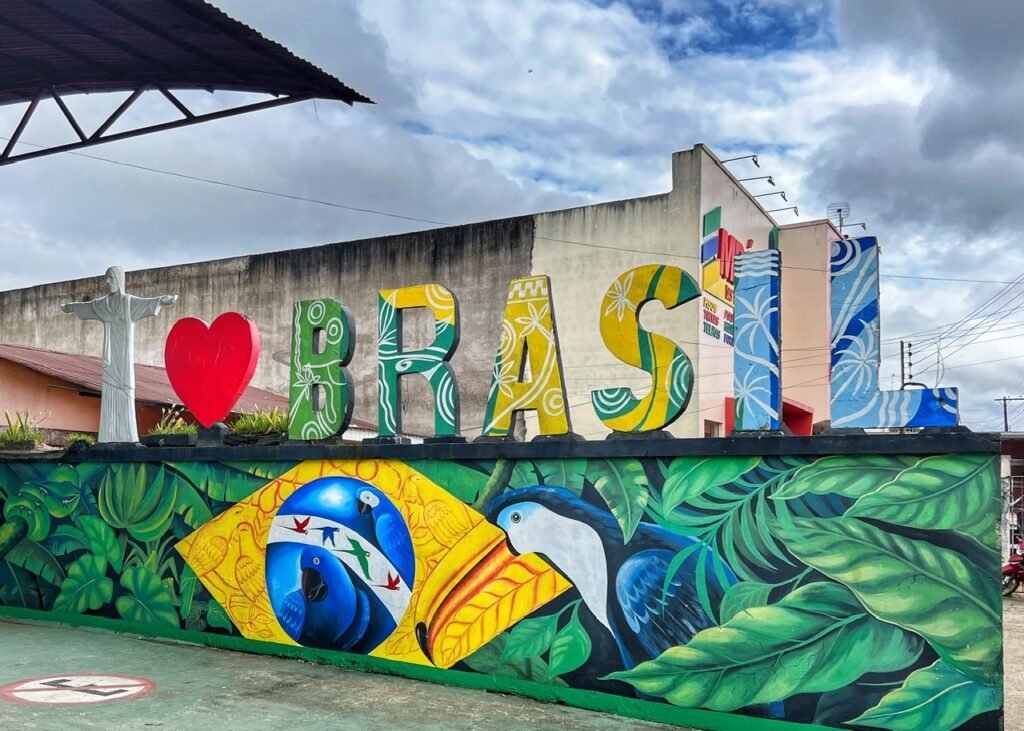
Then, at last we saw Instagram-worthy proof that we had entered our next country.
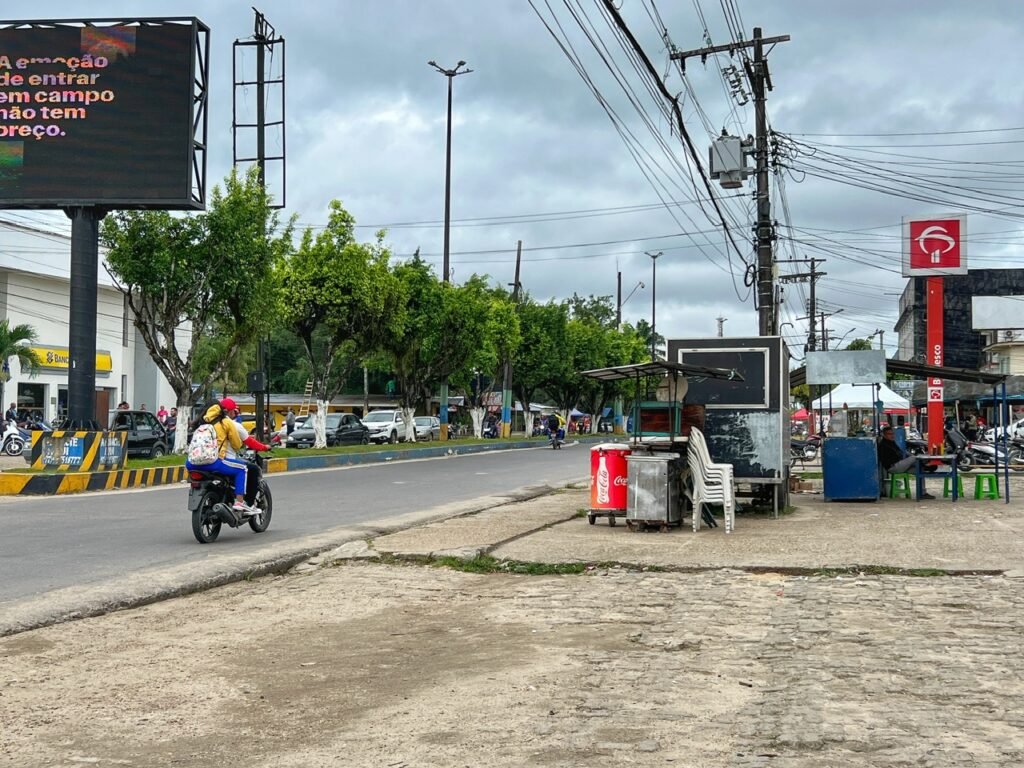
Entering the streets of Tabatinga, Brazil, Leticia’s even grittier brother border town. Tabatinga is pronounced Taba-chinga in Portuguese, by the way.
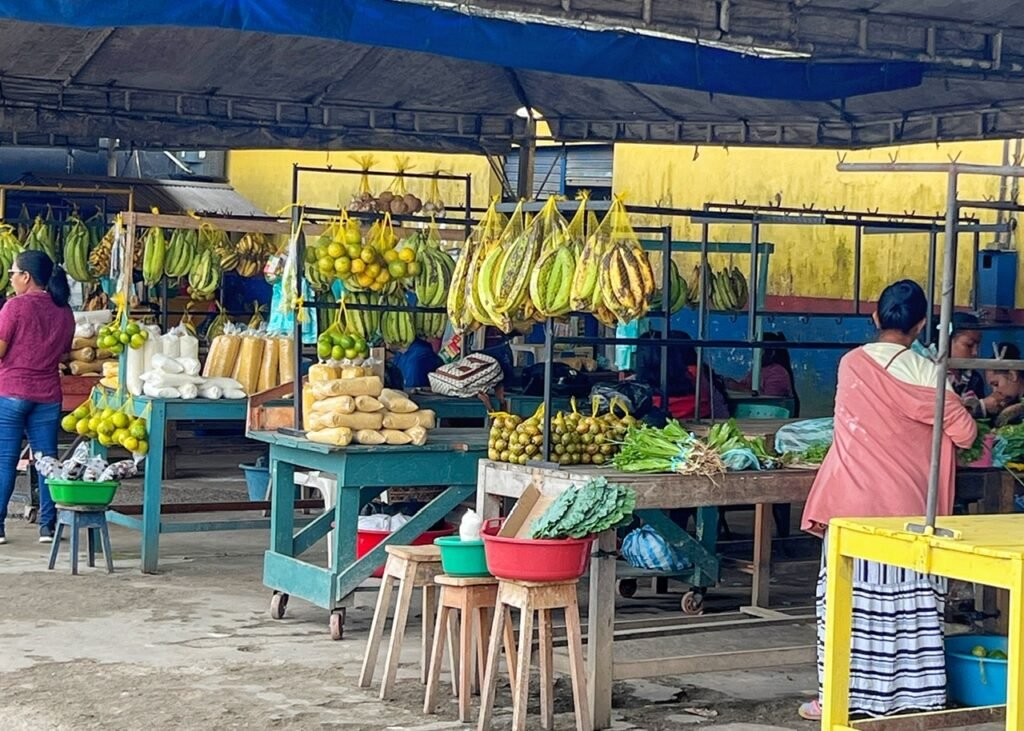
Our first Brazilian fruit was not the smorgasbord we were dreaming of. Mostly bananas, plantains and citrus.
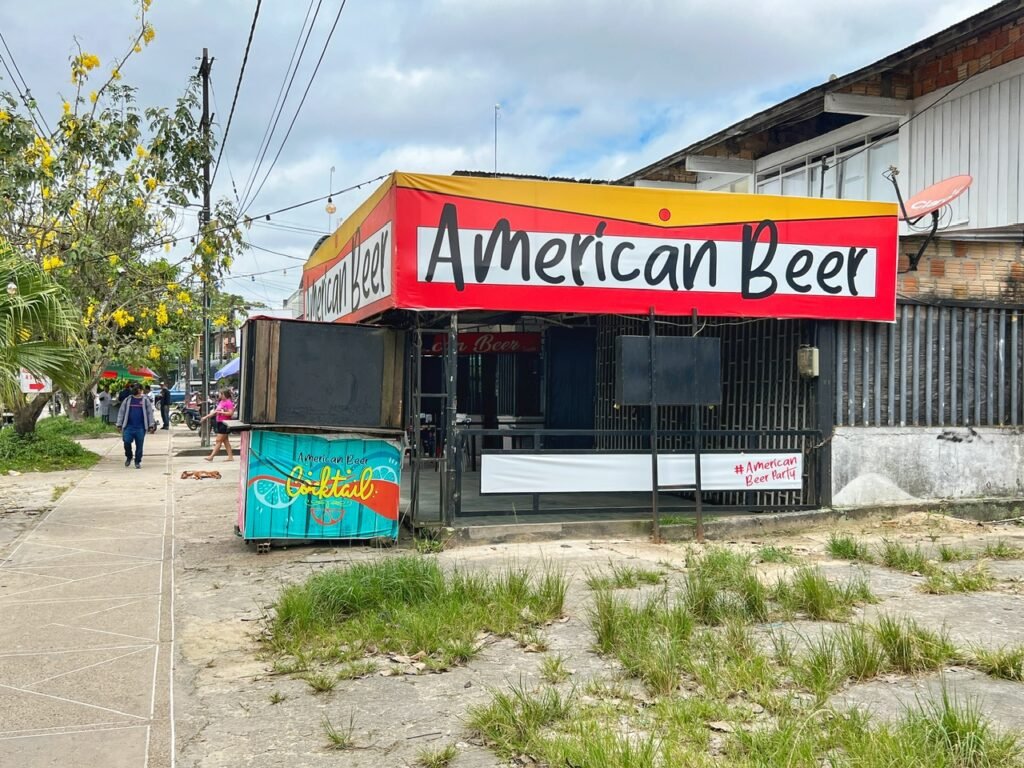
Our first Brazilian beer shop was also not what we’d been dreaming of. 😂

After returning to Colombia, we sought out lunch and in the land of the carnivore, miraculously found a vegetarian restaurant complete with a Buddhist sitting out front to complete our India tuki tuki, crazy introduction.
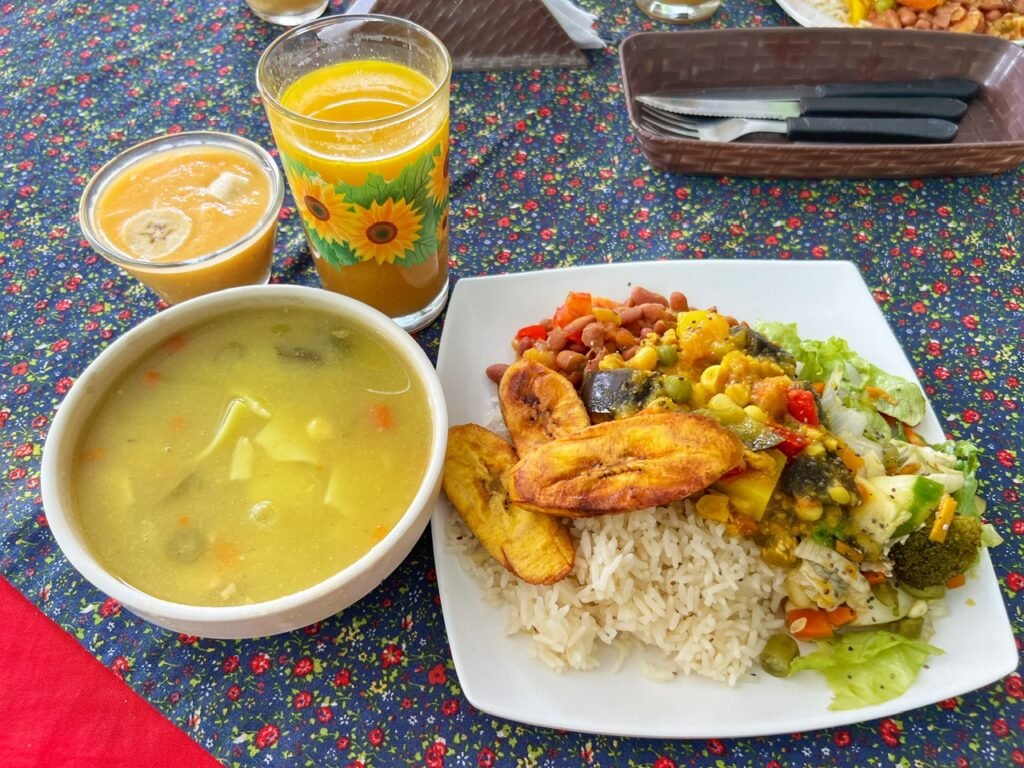
For 20,000 pesos, $5 each, it was one of the best meals we’ve had in weeks. Thank you Buddha gods.
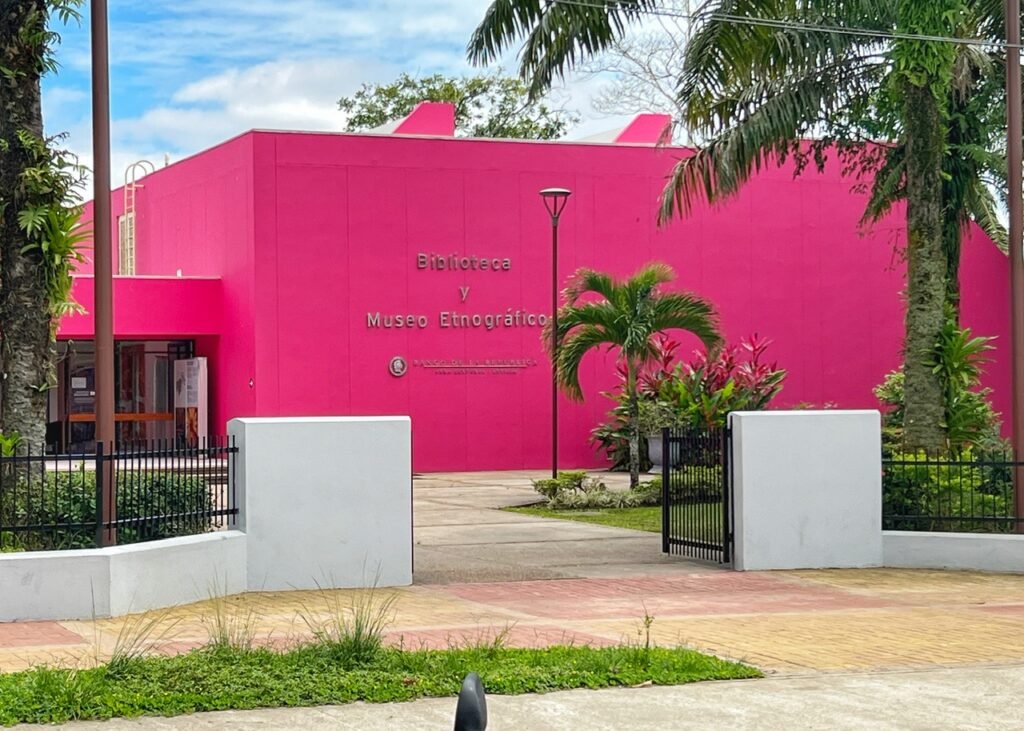
On other occasions, while roaming Leticia in transition, we were desperately seeking internet to deal with logistics. Although the cell service is notoriously dreadful in the city, it’s possible to get free wifi at the library and ethnographic museum. This free museum also provided great information on the traditions and cultures of the Amazon indigenous peoples. You’ll know you’re there when you see the hot pink building.
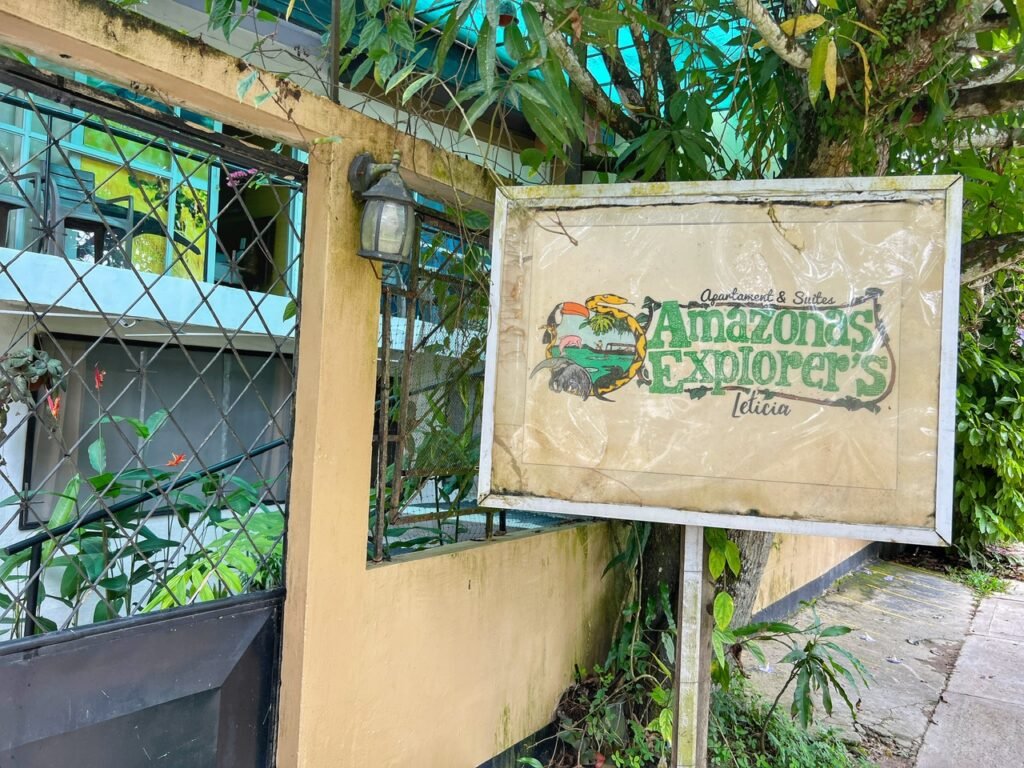
After our first two and second three nights in the jungle, we were more than delighted to land in a Leticia hotel with a GIANT comfy bed, A/C, internet and a lukewarm shower. For this we chose Amazonas Explorers, which was a wonderful option for about $21/night.

It is humbling how grateful you feel for each and every one of these things after being clammy in the Ammy for days.

Later that night, we explored more of Leticia and of course had to check out their most notable and trippy natural attraction. It feels like an incident straight out of Hitchcock which takes place every night in this park, Parque Santander. Thousands and thousands of parakeets, looking more like swifts swoop erratically in droves into Leticia flitting into the trees and making a cacophonous racket until they settle and then stay until sunrise….
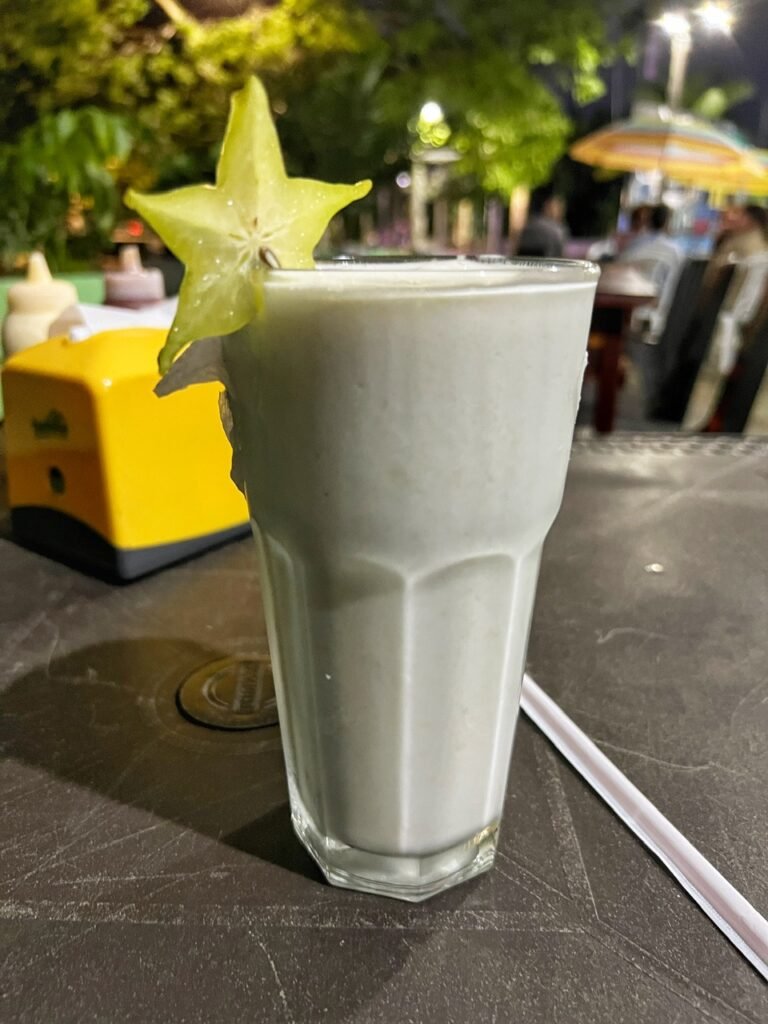
Grabbing a Copasu smoothie with our dinner for about a $1. Copasu is an exotic Amazon super fruit characterized by properties similar to cacao with a bittersweet taste and divine aroma.
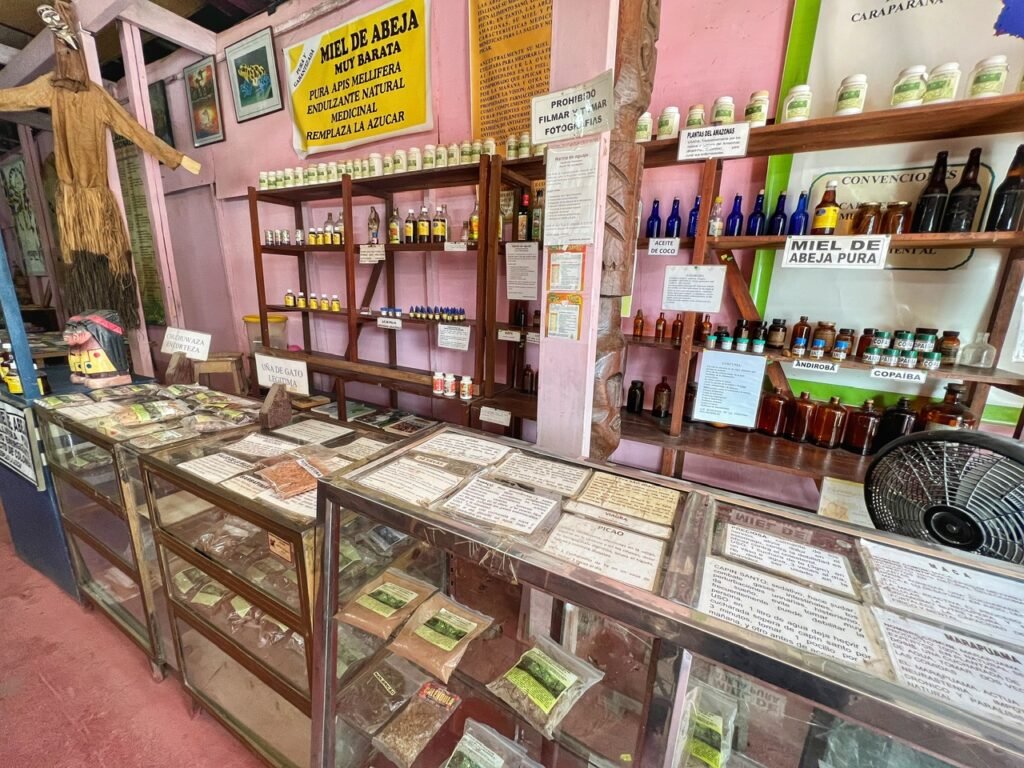

On another day, we had a lot of time to kill in Leticia, so we paid a visit to a couple free museums which had giant displays of the many medical uses of Amazonian plants. As well as skins from various wildlife including black caimans, which are by far the largest.

These squirmy wormys are known as Mojojoy, which is the name of larvae of different palm weevils found in the Amazon region of Colombia, eaten as food and are known as a pest for various palm species. We didn’t get the chance the try them but heard the flavor has a taste similar to hazelnuts and butter. Evidently they’re packed with protein and a very sustainable food source.
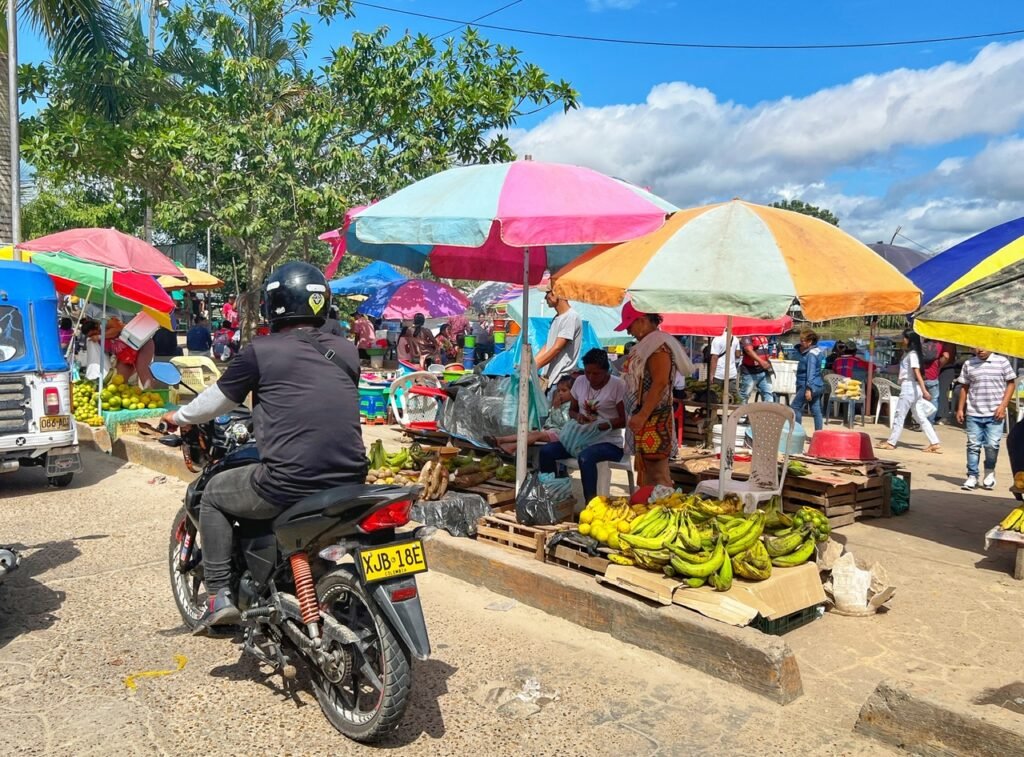
The Leticia waterfront market and malecón on a Saturday morning. You’ll see an interesting blend of people here. Many locals are arriving to the port from far away villages to stock up on supplies, while backpacker gringos and other local travelers get shuffled onto motor boats for day trips.

A pleasant surprise to learn was that the region of Amazonas is very good about repurposing and recycling. An example of one such effort…tires turned into planters.
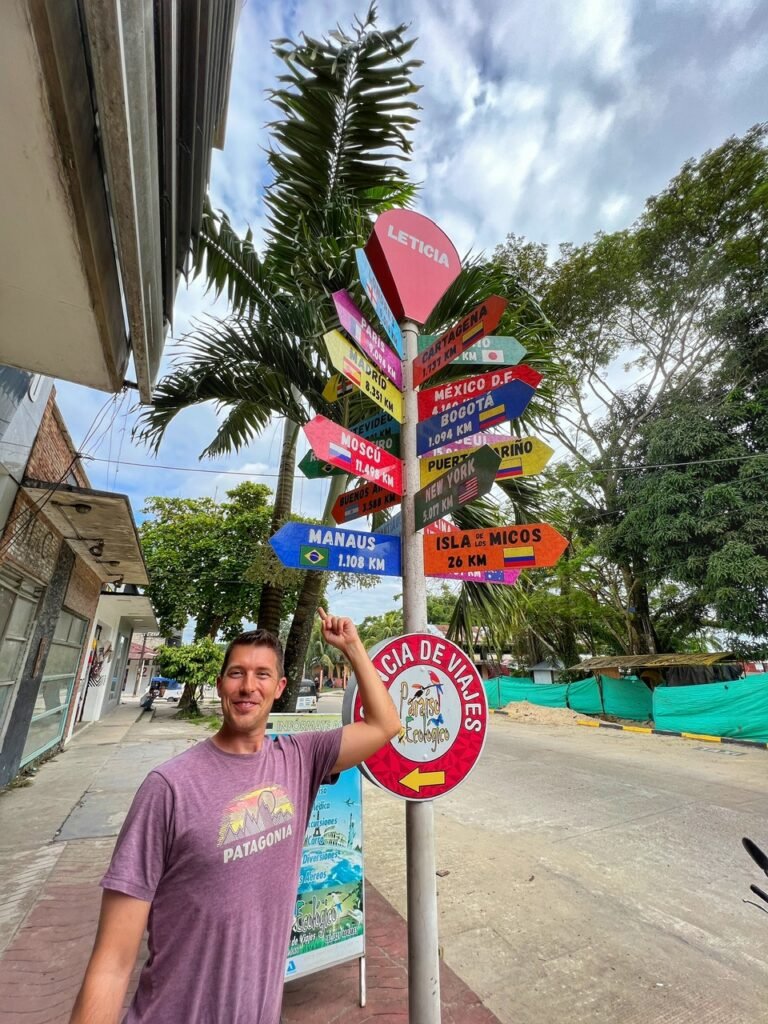
Greg gives you a clue where we’re going next. Hmmm 🤔 Where could it be?!


